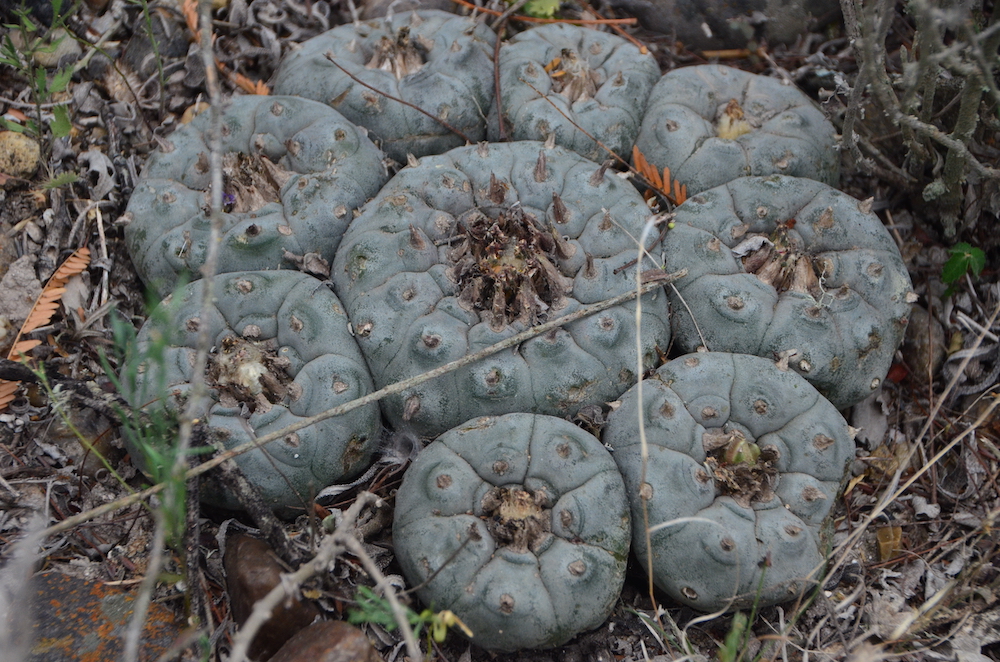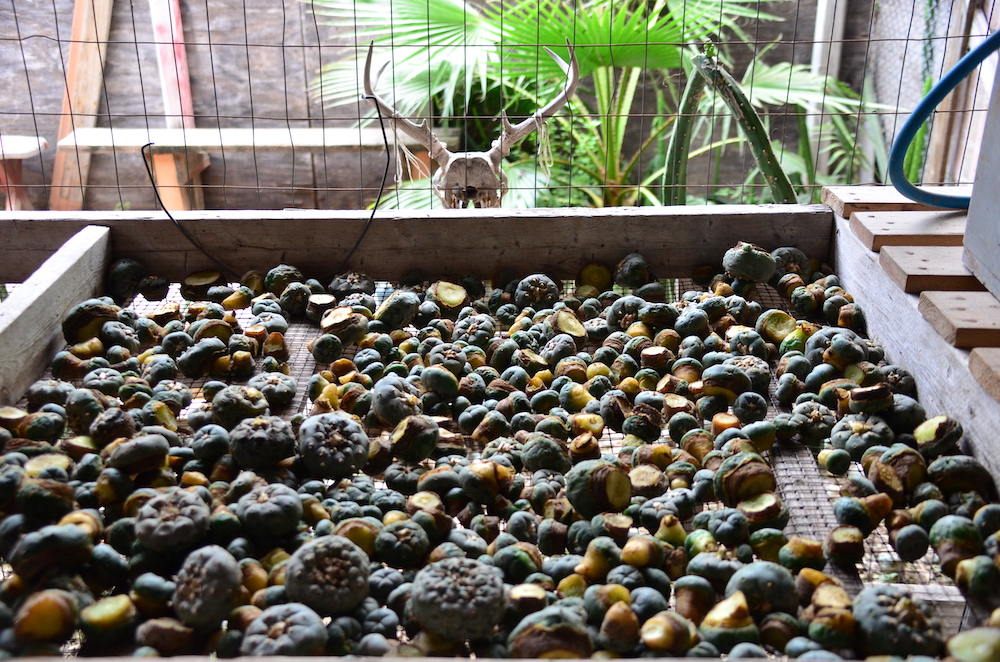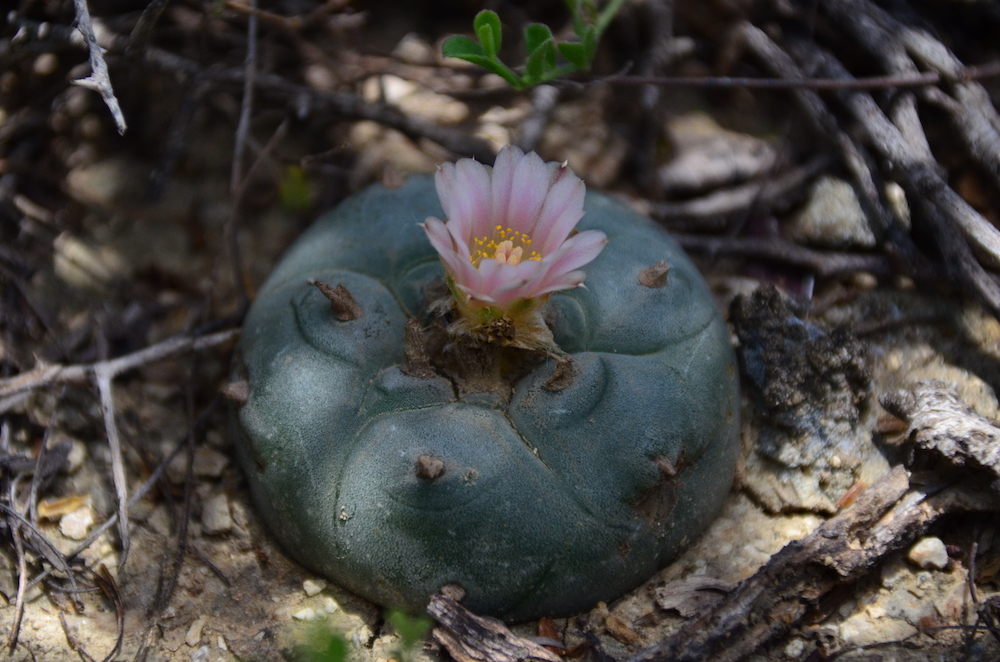- Cactus Conservation Institute Clarification Note about Decriminalize Nature Claims - June 14, 2022
- A Word in Edgewise About the Sustainability of Peyote - May 12, 2020
- Peyote in the United States: Prisoner of War as the War Wanes - November 20, 2017
“Do you bite your thumb at me, sir?”
“I do not bite my thumb at thee, sir. But I do bite my thumb.”
—Shakespeare, Romeo & Juliet, Act I, Scene 1
“Sustainable use” means the use of the components of biological diversity in a way and at a rate that does not lead to the long-term decline of biological diversity, thereby maintaining its potential to meet the needs and aspirations of present and future generations. (Convention on Biological Diversity, 1993).
In the natural sciences, for a long time, discussions about sustainability focused exclusively on the biological aspects. Harvesting of wild plants is sustainable if it is “conducted at a scale and rate and in a manner that maintains populations and species over the long term,” according to The International Standard for Sustainable Wild Collection of Medicinal and Aromatic Plants (ISSC-MAP, 2007). A very simplified way of looking at biological sustainability is this: All biological resources are renewable. If the rate of harvest is less than the rate of renewal, then the species or population should persist in the long term.

Harvesting is sustainable when it allows for the long-term persistence of harvested populations and does not negatively affect other species or ecosystem functions
Recently, this definition has broadened to include the impacts of harvesting on other components of an ecosystem. Harvesting is sustainable when it allows for the long-term persistence of harvested populations and does not negatively affect other species or ecosystem functions.1 This is a very important condition, as removing one link from the complex web of life can have consequences for the entire ecological community. For example, the flowers of Banisteriopsis caapi secrete oils that are collected by specific Hymenoptera species, which are also pollinators. In turn, the ants also tend to and protect the larvae of several lycaenid butterfly species.
But, of course, real life is more complex than this. Sustainability of the harvesting of any natural resource is not a “yes or no” issue, even in the presence of solid ecological knowledge—if that is ever obtainable.
All natural resources used by humans are embedded in complex, social-ecological systems (SESs). Biology is just one of the three components: the ecological, the social, and the economic. All three need to converge for long-term effective conservation. “Social sustainability” implies cultural appropriateness, social support, and institutions that can function long term. “Economic sustainability” indicates that one activity outcompetes an unsustainable alternative in profit generation.
There are many challenges with estimating sustainability. Natural and social sciences have different approaches and use different concepts and terminology. Moreover, ecological, social, and economic systems are dynamic; so, sustainability criteria for any system are a moving target. How do people begin to understand this multidisciplinary beast? They create models in order to make sense of—and not miss out on—the many intricacies of these interconnected systems.
A common conceptual framework can help to organize findings and provide a map to the complex world of social ecological systems.2 One of the most comprehensive conceptual frameworks in the field of sustainability was developed by Elinor Ostrom, the first of only two women to win the Nobel Prize in Economics.
We’d like to present a case study of peyote harvesting in the wild, and apply Ostrom’s framework in order to assess the sustainability of the current system, and to see what the barriers are to achieving maximum sustainability.
Case Study: Peyote Harvesting in the USA
Lophophora williamsii (Lem. ex Salm-Dyck) J.M. Coult. (Cactaceae), commonly known as “peyote,” is a small psychoactive cactus growing in Texas, the USA and Mexico. It is a “cultural keystone species”: “a species whose existence and symbolic value are essential to the stability of a cultural group over time”.3 In the USA, it is estimated that about 250–500K members of the Native American Church (NAC) use peyote as a sacrament and medicine, although it is hard to estimate the numbers with any certainty. Native Americans fought for many decades to obtain the rights to use peyote, but only achieved this as recently as 1994. Peyote is also listed as a Schedule 1 drug in the USA under the Controlled Substances Act of 1970.
The latest assessment from the International Union for the Conservation of Nature (IUCN, 2009) lists this cactus as “vulnerable,” due to the fact that an ongoing population decline of ca. 30% per annum has been projected. In 1995, the NAC declared a “peyote crisis,” due to increasing difficulty in obtaining peyote, as well as the diminishing size of peyote buttons. In the last 20 years, the situation has only worsened. In the USA, the subject of the peyote population decline has been raised multiple times since the 1980s. Harvesting is only one of the threats facing peyote. There is also large-scale land use change and the unknown effects of climate change.

What we’d like to see is a move beyond thinking about peyote in solely one category or another; whether it is a natural resource, a trade commodity, a sacrament, a medicine, a Schedule 1 drug, etc. It is all of these, and more. We need a more integrated approach to achieve sustainability.
This exercise is going to appear reductive, and will look at peyote from a different perspective than what you’re used to. You might think of peyote as a drug, as a medicine or as a sacrament, so counting cacti and calling them “resource units” is weird. Our lens is that of conservation biologists, and we view peyote as a vulnerable cactus, in peril. By temporarily looking at it as a natural resource, we can apply what we learned from other challenging conservation problems. What we’d like to see is a move beyond thinking about peyote in solely one category or another; whether it is a natural resource, a trade commodity, a sacrament, a medicine, a Schedule 1 drug, etc. It is all of these, and more. We need a more integrated approach to achieve sustainability. The goal is twofold.
Ecological Performance Measures:
• Peyote biological sustainability and the overall ecosystem health/functioning
Social Performance Measures:
• Guaranteed access to peyote for religious, medicinal and cultural purposes for the members of the Native American Church
We cannot go here into details through all of the indicators; there are 56 of them and each could be a topic of its own article. However, most of the indicators show that we do not have enough data, and the data that there are indicate that harvesting from the wild, given the current methods and regulatory measures, is not sustainable.
What Do We Need in Order to Understand Sustainability?
- The rate of growth and renewal are vital knowledge requirements, as is a species’ response to different harvesting regimens. This is key information for defining an ecologically sustainable yield; e.g., sustainable yield = a harvesting rate < than the renewal rate. Terry et al.4 5 6 made a reasonable start on this, but we need to understand the effects of different harvesting practices and harvesting rates as well.
- Development of rapid, reliable and credible peyote inventory techniques (Ermakova et al. 2020, in press).
- Clear, evidence-based guidelines on harvesting quotas and techniques. Sustainable harvest systems must be flexible and adaptive; i.e., harvest rules or quotas should not be fixed but rather consistently monitored, evaluated, and adapted to the current conditions. We’ve made initial recommendations, but these need to be applied and tested in practice!
- Understanding of the dynamics of the ecosystem and its interaction with the plant.
- Knowledge of species abundance in the environment, the factors that drive their abundance and productivity, and their responses to harvesting and other external pressures.
- Understanding seasonal changes, environmental variables, and response to stochastic events, such as drought, floods, freezes, pests, etc.
- Establishing refugia, or some safety nets for peyote. These can be size refugia (do not harvest large seed producers or small plants); or spatial refugia (presence of populations in the areas inaccessible to harvesters, such as protected areas).
- Impact of peyote harvesting on other elements of the ecosystem. How does removal of peyote cacti affect the remaining members of the biological community? We simply don’t know!
- Understanding interactive effects of harvesting and other drivers, including climate and land use changes.
But, more urgently than all of the above, we need consultation with, and respect for the beliefs, wishes, and opinions of the key actors: Native Americans and landowners.
The landowners should also be an integral part of any initiatives, as peyote grows on their property, and they are—or could be—the main custodians and stewards of the land. As part of economic sustainability, there should be incentives for ranchers to protect peyote on their land; something that can convince them that conserving Tamaulipan thornscrub is more important than root-ploughing it for agriculture of “improved grazing,” or leasing it to build oil, gas, and wind-farm infrastructures.
Native American Church members are the main consumers of peyote, and absolutely have to be involved and listened to when developing any conservation initiatives. We need to understand the attitudes and develop alternatives to harvesting peyote in the wild; but, only if these alternatives are culturally acceptable.
The governance systems are the key to ensuring sustainability. But, to be effective, they need to be ecologically informed, adaptive and flexible
With respect to harvesting practices and guidelines, development of effective and locally-appropriate participatory monitoring systems is needed. What is the purpose of the guidelines if no one follows them? The governance systems are the key to ensuring sustainability. But, to be effective, they need to be ecologically informed, adaptive and flexible (via feedback loops provided by monitoring and evaluation), which is absolutely not the case in the current situation. Experience from many sectors all across the world indicate that community-led initiatives are more sustainable in the long-term than top-down hierarchical governance. Managing complex socio-ecological systems requires institutional arrangements that are more flexible and responsive to rapidly changing conditions than top-down governance regimes. Under current regulations, re-wilding[1] and habitat restoration—not to mention cultivation—initiatives involving peyote are akin in their regulatory complexity to manufacturing a Schedule 1 drug such as heroin! Moreover, the current regulations in place do not seem to be effective, and poaching in South Texas remains a serious, continuing problem.

Conclusion
Sustainability necessitates integration of cultural perspectives and scientific discoveries to tackle challenges, with the additional strand that weaves these together: environmental and social justice
The sustainability question is an amalgamation of cultural, biological, economic, political, and social elements; all important and often indistinguishable. Solid ecological or environmental knowledge and evidence-based solutions are necessary, but not sufficient, to establish long-term sustainability for the species. Sustainability necessitates integration of cultural perspectives and scientific discoveries to tackle challenges, with the additional strand that weaves these together: environmental and social justice; justice, not limited to natural resources, but also including rights to cultural diversity in terms of knowledge and practices.
(*) Rewilding is large-scale conservation aimed at restoring and protecting natural processes and core wilderness areas, providing connectivity between such areas, and protecting or reintroducing apex predators and keystone species.
Art by Mariom Luna.
References
- Ticktin, T., & Shackleton, C. (2011). Harvesting non-timber forest products sustainably: Opportunities and challenges. InS, Shackleton, C. M. Shackleton, & P. Shanley (Eds.), Non-timber forest products in the global context (pp. 149–169). Berlin: Springer. ↩
- Ostrom, E. (2009). A general framework for analyzing sustainability of social-ecological systems. Science, 325(5939), 419–422. ↩
- Cristancho, S., & Vining, J. (2004). Culturally defined keystone species. Human Ecology Review, 11(2),153–164. ↩
- Terry, M., Trout, K., Williams, B., Herrera, T., & Fowler, N. (2011). Limitations to natural production of Lophophora williamsii (Cactaceae) I. Regrowth and survivorship two years post harvest in a South Texas population. Journal of the Botanical Research Institute of Texas, 661-675. ↩
- Terry, M., Trout, K., Williams, B., Herrera, T., & Fowler, N. (2012). Limitations to natural production of Lophophora williamsii (Cactaceae) II. Effects of repeated harvesting at two-year intervals in a South Texas population. Journal of the Botanical Research Institute of Texas, 6(2), 567–577. ↩
- Terry, M., Trout, K., Williams, B., Herrera, T., & Fowler, N. (2014). Limitations to natural production of Lophophora williamsii (Cactaceae) III. Effects of repeated harvesting at two-year intervals for six years in a South Texas (USA) population. Journal of the Botanical Research Institute of Texas, 8(2), 541–550. ↩
Take a minute to browse our stock:
Did you enjoy reading this article?
Please support Chacruna's work by donating to us. We are an independent organization and we offer free education and advocacy for psychedelic plant medicines. We are a team of dedicated volunteers!
Can you help Chacruna advance cultural understanding around these substances?















